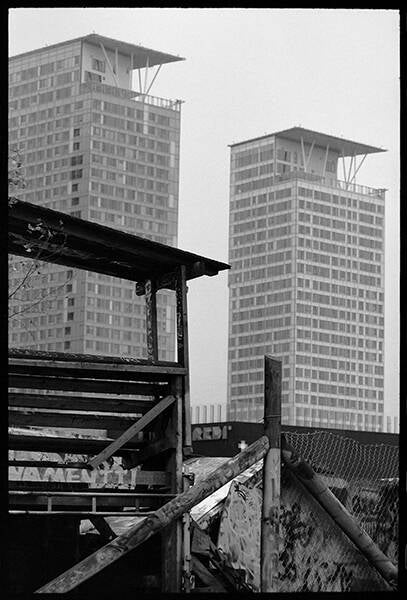Adam Lloyd Monaghan.
Documentary Photographer.
Suvilahti Redevelopment.
Helsinki and the neighbouring districts are changing very quickly; developers are moving in across all aspects of the city and its suburbs. Wooded areas are being flattened, shorelines forever changed, strangely attractive 1970s Brutalist low rises are torn down and any empty spaces are filled with shopping centres and expensive apartments.
Whilst the population of Finland is not dramatically expanding, the capital region is undoubtedly seeing a rise in numbers. But this increase is far out stripped by the multitude of new builds; apartment blocks sprout up everywhere. It is easy to spot those from the 1960s and 70s, separated as they are by many tens of metres and often with tree lined streets and communal areas. Not so the recent developments, where row houses and blocks of flats are often quite literally touching distance from one another. Pull down one old house and build six in its place.
Waterfronts are obviously desirable targets. Why leave empty spaces when developments will bring millions? The lure is understandable, if short-sighted. As an immigrant, having witnessed such changes elsewhere and seeing how fast they are happening here, one wonders how the planners have not looked further afield and seen the longer term implications of these decisions.
The very real risk is that Helsinki, Vantaa and Espoo will soon lose many of the features that make them so undeniably attractive. Indeed, many areas already have. For example, we may celebrate the new library - and there is a lot to be impressed by – but erasing the last remnants of the old red brick station buildings in order to build it, is something that can never be undone. Looking forward is one thing, but never stopping to look back is another.
The plans for Suvilahti sound noble, but the loss will be real. What is fundamentally an organic cultural area is being bulldozed and replaced with a commodified version. This is, of course, a well-worn path: run down industrial areas spawning creative environments, which in turn become business opportunities which in due course are inevitably gentrified.
Perhaps it is simply the lament of every generation that when it happens to something you know or something you care about, you feel the loss more acutely. As witnesses to the change, you see what will never be again. Perhaps also, that is why documentary photography is so important.
Adam Monaghan March 2022
